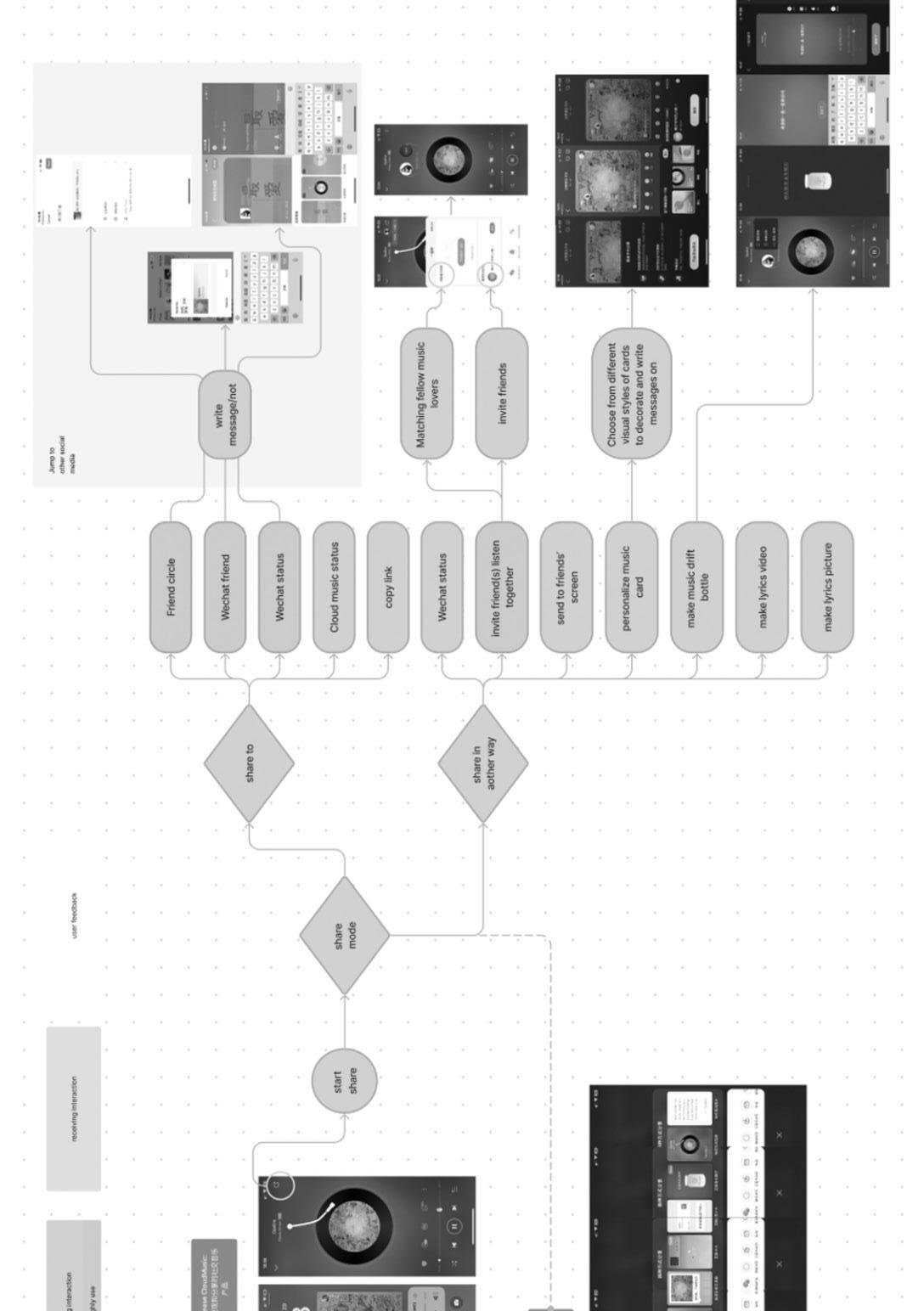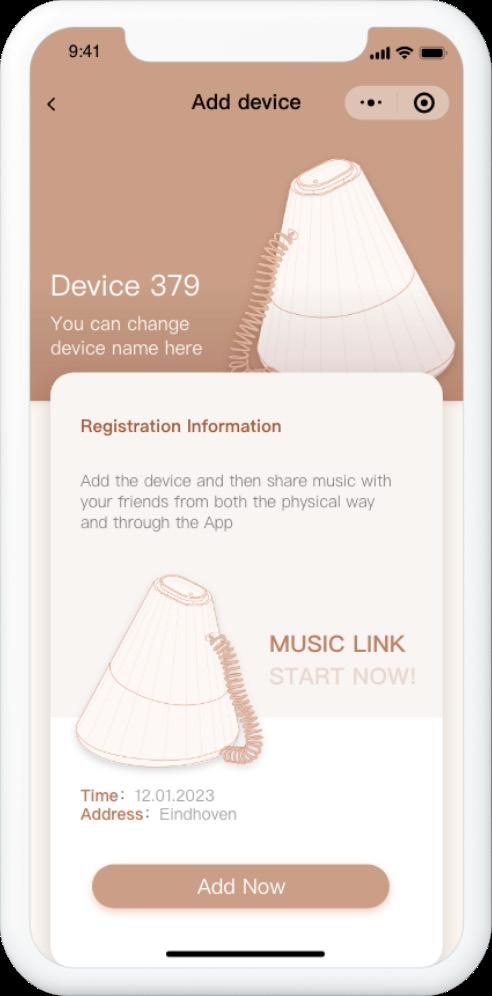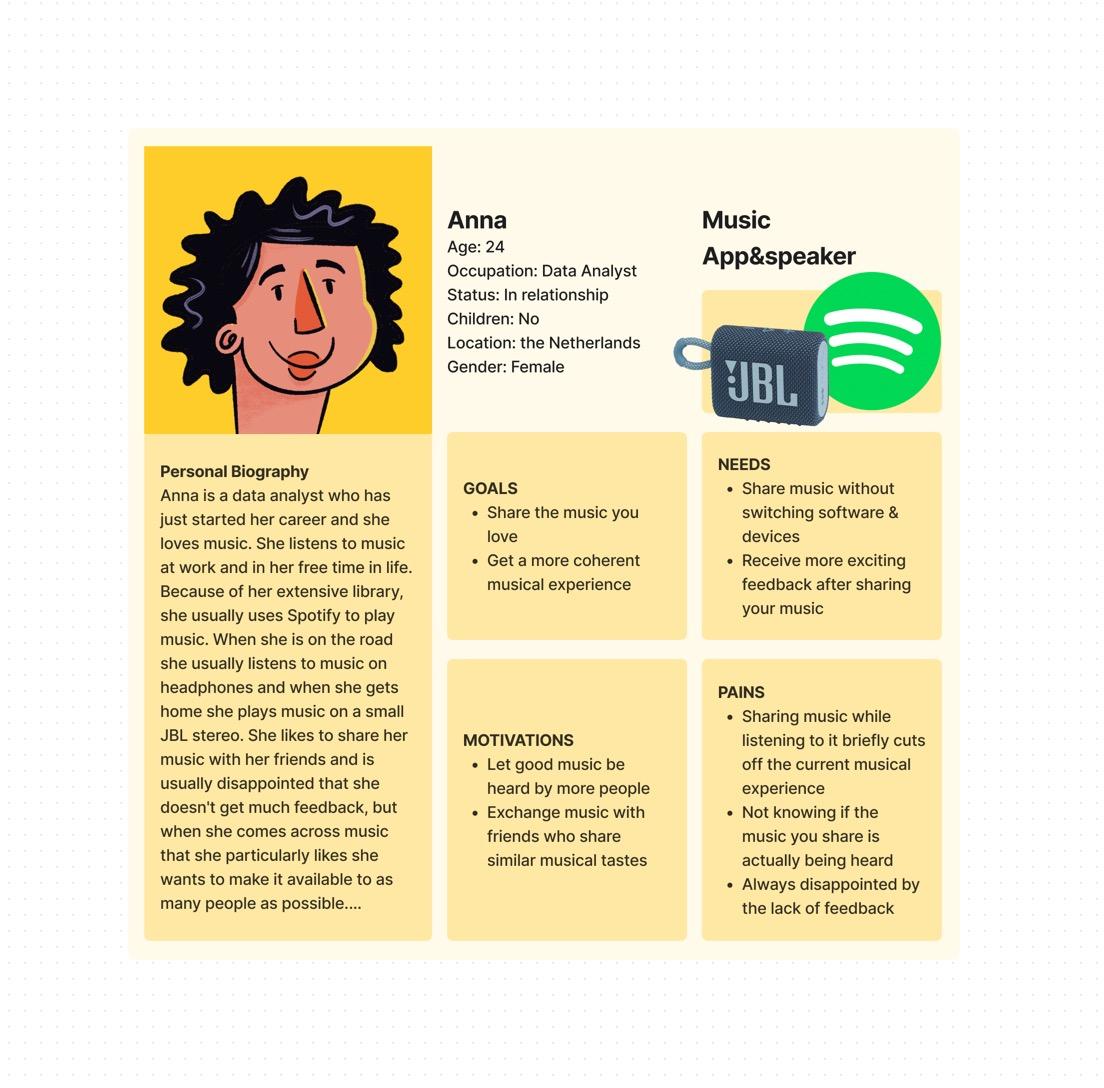
6 minute read
EXPERIENCE
The rapid progress of digital revolution brings the trend of dematerialization. It is used to describe the trend towards the replacement of more and more physical products with electronic information[26].
With the dematerialization of the musical experience brought about by the development of streaming music, people are beginning to realize that some of the sense of experience unique to the physical
Advertisement
An analysis of the social properties and sharing interaction processes of Spotify and NetEase Cloud Music, two of the marketleading streaming music applications, reveals that exploring the social aspects of music is not an easy task. Designers from all over the world are constantly trying to create services and designs that allow users to share music better. However, in practice, the combination of music and social interaction often causes different levels of conflict due to different user engagement purposes, usage habits, strategic goals, and design features of the software itself.
THE CONFLICT BETWEEN USERS' PURE DESIRE TO COMMUNICATE MUSIC AND THE CONVERGENCE OF STREAMING PLATFORMS TOWARDS SOCIAL MEDIA APPLICATIONS IN ORDER TO ATTRACT USERS IS EMERGING [16].
Therefore, in order to develop a design that improves the experience of sharing music, the project must first strike a balance between the importance of the social and musical elements, placing a strong emphasis on assisting users in better understanding and communicating music while avoiding overburdening them with social cues. Second, as people typically choose attractive ways of delivering music, it is also crucial to think about how to make the shared information conveyed more appealing.
At the same time, the project will attempt to create a physical product to support the music sharing experience, relying on the basic functions of streaming music platforms. The physical medium of a music player has a timeless appeal to people. It provides a sense of ritual and a deeper emotional connection to the process of sharing through touch, while streaming services provide easy access to a vast library of music. The combination of the two can help us better enjoy and communicate music in the twenty-first century.
03
EXPLORE THE CURRENT MUSIC SHARING FLOW
In order to better explore users' scenarios and needs for enjoying and sharing music in their daily lives, I invited six young people to conduct semi-structured user interviews and collected photographs of their usual music listening places and audio equipment. All data from images and audio files from
3.1 METHODOLOGY Participants
Six young people aged between 22 and 29 were interviewed for approximately 20–30 minutes each, two of whom were in a relationship and therefore were interviewed together. The interviews focused on three main areas of inquiry.
1) Users' motivations for sharing music and the feedback they expect from this process
2) The specific actions users take to share music and what they think at different stages of the process
3) What technical or behavioural barriers exist in current music-sharing interaction processes, and what factors may discourage the party from sharing or being shared music?
Considering that the subsequent design direction was mainly physical product design, questions related to the perception of using physical music playing devices interviews were shared with participants and consent was sought before testing. Interviews were done in compliance with the Ethical Review Board (ERB) , which is a general regulation belongs to Industrial Design department. were also included in the interviews. The basic information of the interviewees is shown in Table 1, and the relevant interview questions can be found in Appendix B.
The in-depth user interviews provided me with a wealth of information about each interviewee's music, life, and even emotional connections. In order to analyze this information, I first chose to extract the key messages from the transcripts and created post-it notes to summarize them, which is shown in the Figure 5.

Empathy map
"Empathy" is the ability to understand and share the feelings of others. For people in all sectors, including designers, empathy can help them better empathize with the feelings of others and thus uncover the deeper needs of users[13]. In order to explore the needs and feelings of my target users in more depth, I chose to adopt the method of creating the Empathy Map by categorizing the content of sticky notes according to their actions, words, feelings, and thoughts. This allows me to gain a deeper understanding of the user's behaviours and feelings and minimize my own subjective ideas as a designer. Sometimes there are discrepancies between what people say and what they do, which are indeed caused by people's inner needs. The content of the Empathy Map is shown in Figure 6.
Create User Interaction Flow of sharing music

In order to have a more intuitive and complete understanding of the existing user experience of sharing music, based on the content of the user interviews and the Empathy map created, I have summarized the general flow of how users currently share music and the different situations that may occur, as shown in Figure 7.

3.2 FINDINGS
The empathy map and current user interaction flow of sharing music resulted in 5 general themes.
Motivations for music sharing
Many people's actions to share music are driven by their desire to share. All six of the young people interviewed expressed a desire to share music, and even though some of them had gradually started to share less music, the desire to share had not been lost. Some of the interviewees said that sharing their favourite music and various related things made them happy and that they did not particularly care about the outcome of sharing, but rather enjoyed the process of sharing. For example, P6 said, "I don't care if anyone gives me feedback, I just want to share it."
Sharing and receiving feedback on music
People may receive different forms of feedback after sharing music, such as further communication about the music, starting a new conversation about the music, or simply giving a "heart" or "thumbs up." Many people feel disappointed because of the discrepancy between the actual feedback they receive and the psychological feedback they expect. Some users expect more insight or deeper communication about the topic, but often receive perfunctory responses. They may feel frustrated or even cut back on sharing music because they are afraid they won't receive the feedback they were expecting. Some users simply want to share their music and are happy enough to know that the receivers have heard it, or that a simple "like" is enough for them.
Ways of presenting the music message
Several interviewees stated that when they were the ones being shared a piece of music, the manner in which the music was presented may have played a role in whether people opened this music message. P2 says she prefers to click on the songs her friends share on NetEase Cloud Music because it has a nice electronic album cover with the song and artist names. In contrast, Apple Music's sharing with only the app's icon is bland and uninspiring, as is the text-based web link that results from YouTube sharing. In particular, all respondents mentioned that they had to switch to third-party social media software when sharing music, due to the limitations of the current mainstream music software. The problem with this form of sharing, however, is that it is inconvenient for the person being shared when they are in a meeting, at school, or in any situation where it is not convenient for them to check their music messages. P4 said, "The very painful point for me is that when you click on that song, it has good sound, and then maybe I'm standing in that environment and it's not suitable to listen to that song, like I might be in the living room, or I might be outside, and I might not be able to play it out, or I don't have my headphones on, or something like that, but I just don't want to listen to that song for a while. ”
A sense of fragmentation in the music sharing process
It is evident from the current interaction flow of how users commonly share music that there is not a coherent transition between enjoying music and sharing it. When people hear a great song that they want to share, they have to switch from the music application to a third-party social media platform to do so, and the sharer has to make multiple page hops in the process. For the recipient of the shared music, they often have to click on it, jump to the thirdparty music software, confirm it, and then return to the social media platform when they have finished listening to the music and want to give feedback.
Musical engagement and physicality
One of the interesting things was that most interviewees expressed a preference for vintage music players and related physical products, but they also said they didn't use them very often. People often like to use and display vintage music players when they just get them, and many participants wished to get gorgeous and special vinyl records as memorable gifts. However, the tedious steps involved can gradually put them off using these products again and again. "It's not too easy to operate; it's not like the Bluetooth player, even a Bluetooth to the phone to play the song on the line, and then you have to take the vinyl out, and then put the record player in a position, plug him in, and then put the needle up, and then he dials again, that is, he dials after you dial," P1 explained.







